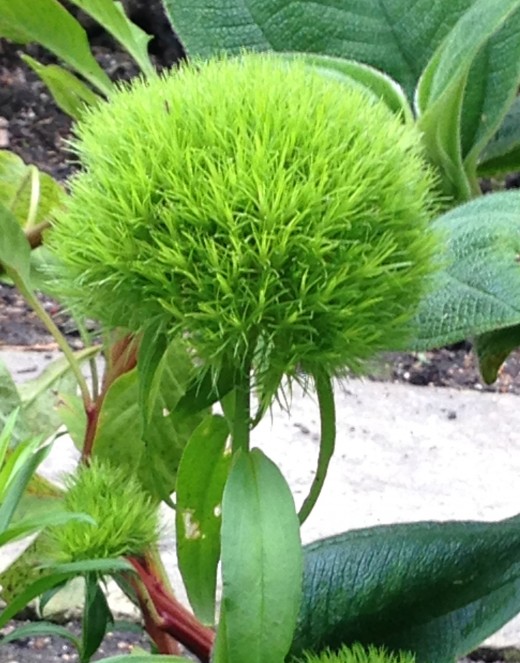Sensory Gardens: Create Your Own Eden

While all gardens titillate the senses, sensory or enabling gardens are designed to arouse all five senses as well as be accessible to all ages and abilities. If you are interested in creating your own backyard eden, the following tips will help you down the design path.
What Type Of Space Do You Need?
Sensory gardens were initially created for the sight impaired. With an increasing concern for the environment and inclusion for all, many people are now consciously designing gardens that enable the breadth of society, children, the elderly and the disabled, to connect with nature. Care is given to ensure access to all and stimulate all five senses.
While design keeps these groups in mind, the actual garden enhances the experience of all visitors. Colors can be vivid (or cool), touch is encouraged without worry of breaking plants, scents abound and are provided by plants that do not require touch (such as roses) and those that do. Plants with berries, fruit or leaves for the taking provide a delight to the tongue. The sounds of rustling leaves, running water and wind chimes soothe.
The first thing you need to decide is what kind of space you need. A sensory garden bed can provide a range of sensory experiences in one location. A sensory path can connect areas and focus on one or two senses, such as sight and scent. Or, enrich your overall landscape with very specific sensory experiences located in different areas of your yard.
Plan Before You Dig
Many sensory gardens are large public displays at botanic gardens. Home gardeners will plan their garden in much the same way professionals do albeit on a smaller scale. The first order of business is to decide:
Who will you be planning your garden for? Do you have small children or grandchildren? Many sensory gardens have edible plants so if there are or will be little ones about you'll want to make sure none of your plants are poisonous. Make sure you have low growing plants for easier reach and don't include plants with thorns.
Are you interested in creating a garden that spans your life? Back problems and balance are not uncommon as we age. If you plan on staying in your home in your later years, walkways should be smooth and even; adding raised beds will ease back pain and make access easier as you age.
How will you use your space? Will it include fruits and vegetables as well as flowers? Will children need to use the yard to play? If so, you'll want to leave an open green space for them. Do you want to attract specific insects (ladybugs, butterflies, bees) or wildlife? If so, you'll need to design areas that meet their needs, too. Put pencil to paper and draw everything out before you start to dig up your lawn.
What kind of resources do you have? Plants are not inexpensive. Will you be doing the planting yourself or hiring out? Will you need the help of a designer? Think about doing your garden in stages to put less strain on your budget.
How will your garden be maintained? Will you have the edging and mulching done by a professional? Will you be doing the weeding? How much time do you want to spend on that per week? If you have neither the time nor the patience for weeding, start small. Nothing looks worse than a beautiful garden bed filled with weeds.







Enhance Sight
When designing a garden for sight, not only does it need to look pretty, it needs to evoke a reaction. Do you want to create a sense of excitement with bright, vivid colors? Do you want to feel soothed after a tough day? Maybe both? It can be done. Consider decorating your backyard the way you would your home. Not every room has the same feel nor the same function. So can your yard.
When thinking about designing a serene garden, think of creating a "room" for contemplation. It will probably be best placed in a shady area of your yard so that not only does it look serene it feels serene. Wind chimes or trickling fountains go particularly well in this area. Make choosing lawn furniture that is actually comfortable to sit in your first priority. Function over form. Use a predominantly green landscape with evergreens, hostas and shrubs providing shape and texture.
When planning a stimulating garden area, think plants that are bright, colorful and vibrant. Zinnias, marigolds, dahlias can delight without overwhelming. If you have a very deep yard, bright plants will make your property "pop" and make it feel visually closer than it is. Pale plants will need to be scene up close but bright flowers have much more visual impact.







Focus On Fragrance
Scent is such an important part of so many plants yet it is often overlooked. The sweet perfume of an old fashioned lilac can bring back memories from long ago. Lilacs are a beautiful, fragrant shrub that can survive cold winters and many cuttings for bouquets. Newer varieties that re-bloom are readily available at nurseries. Low maintenance, they require no watering or feeding on your part.
The mock orange, another low maintenance shrub, blooms prolifically for about two weeks following the lilacs. It can grow to 10 feet but survives well if pruned to a manageable 5 feet. The perfume from the flowers is out of this world.
Pineapple sage, one of the top three favorite plants of hummingbirds, has bright red flowers and a distinctly pineapple scent. It grows to three to four feet high and is a tough little plant.
Polyanthus jasmine, a vine that can reach 20 feet, has a sweet floral scent. Can easily be grown in a container or as a ground cover.
The Virginia rose, which closely resembles a Rosa Rugosa, but with a wonderful scent. Also known for their fragrance are the bourbon, china and damask variety of roses. Some roses can be temperature sensitive so make sure you choose a fragrant variety for your zone.
Chocolate cosmos do smell like chocolate and are easy to grow though in Zone 5 and up you will need to treat them as an annual. They love full sun and are a big hit with kids.
Veined verbena is by far the best smelling flower I've ever tested. They are drought resistant, love full sun and well-drained soil.




Design With Sound
The rustle of leaves, the cooing of a mourning dove, the trickle of water soothe but have you ever thought of designing your garden to maximize sound? Probably not. Sound is the most overlooked aspect of garden design.
So why not consciously include sound in your landscape? Plant a flowering tree to add visual interest and to double your pleasure when the wind whistles through it. Ornamental grasses rustle, too, while adding visual interest. Add a small fountain to soothe your soul after a tough day at work. Both trees and fountains attract song birds. Add a wind chime. Many people actually pipe in stereo to their backyards allowing them to change the mood at any time.



Reach Out And Touch
How often have you been at a formal garden and found a plant calling to you to touch it? How many times have you done it? None? Most formal gardens have an unwritten "No Touch" rule. Not sensory gardens. They are designed for touching and connecting with nature.
For a change of pace, plant a Green Ball Sweet William. While it may look like it feels picky it is not. It feels like a dried flower and has such an intriguing appearance and color it would make a great addition to your garden.
Pink Zazzle Globe Amaranth is such a stunner. Again, it is not picky but feels like a dried flower. It grows up to 16 inches, loves full sun and is an annual here in the Midwest. Plus, birds and butterflies love them.
What about adding a Serpent's Blue Chalk Fingers? To the touch it feels like a succulent coated in chalk. Evergreen, drought-tolerant, low-growing and a spreading plant that, Chalk Fingers loves sun and looks great in containers. Grow as an annual in Zone 5.





Tickle The Tastebuds
Planting for taste is easy and satisfying yet is an often overlooked aspect of the garden or segregated to the "backyard". Mixed borders with flowers, vegetables and fruits can still be lovely. Some people like to create a separate keyhole garden for "the little ones" with low-growing edible plants that surround a small circular stepping-stone patio interplanted with "steppable" plants. The plant possibilities are endless but here are a few to get you started.
Chives are a full sun perennial that is easy to grow and reaches a height of about one foot. A member of the allium family, the purple blooms, that will turn brown, can be removed to encourage re-blooming.
Raspberries plants are easy to grow and readily available for purchase at your local nursery. They do have thorns and can spread under the right conditions, but supermarket raspberries cannot compete in the taste category with homegrown.
Who doesn't love strawberries? They, too, are easy to grow, thrive in full sun but can invade your yard. Why not consider growing them in a strawberry pot?
Herbs are a great edible to add to your garden and can save you money at the supermarket as well. Both mint and basil love full sun and are easy to grow plants. Cut basil back and it will regow many times a season. Mint is very invasive and should be grown in a container.
Additional Design Considerations
- Choose a color scheme before you make any purchases. You will avoid buying things that don't match.
- Seriously consider putting in raised beds. Your back will thank you down the road.
- Divide your yard into "rooms". Focus on giving each room it's own feel while maintaining a cohesive theme.
- Your gardens should complement your house not clash with it. Zen gardens and bungalows don't mix.
- Impulse purchases lead to plants that die because they're not suited to your location or they can clash with your home.
- Take the long and broad approach when designing. We are a part of nature so your gardens should include everyone.
- Remember to use all five senses.
- Buy furniture that is as comfortable as it is cute. It will encourage you to spend more time outside.
- Initially, stick to fountains as your water feature. From personal experience, ponds are A LOT of work.
- Don't give yourself so much garden work that it becomes a chore. Enjoy your yard.
Do you think now that you've read about them you will visit a sensory garden?
Sensory Gardens Open To The Public
© 2015 Chantelle Porter





























